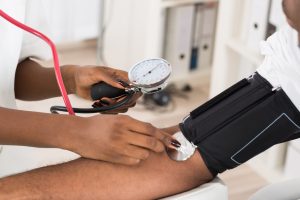A 2014 study in Brazil found that 44% of the male population might have at least one episode of scrotal discomfort in their life.
The scrotum or scrotal sac is a sac of skin that hangs from the body at the front of the male’s pelvis, between the legs. It contains important organs and structures of the male reproductive system – testes, epididymis, and ductus deferens. They mainly function in the production and delivery of sperm. In this article, we will be discussing Scrotal Abnormalities.
Scrotal abnormalities are one of the many conditions that many men are embarrassed to talk about. As such, sufferers tend to delay seeking medical help and these conditions are largely underreported. Not much epidemiology data is available.

What Are the Symptoms?
Symptoms of scrotal abnormalities include:
- A lump
- Sudden or gradual onset pain in the groin
- Pain that radiates to the lower abdomen and back
- Feeling of heaviness in the scrotum
- Tender, swollen or hardened testicle
- Swollen scrotum
- Redness and warmth of the skin of the scrotum
- Increased urinary frequency
- Pain during urination
- Blood in urine
Non-specific systemic symptoms may include:
- Fever
- Nausea and vomiting
What Are the Common Causes?
Scrotal abnormality is a broad term describing various conditions that cause discomfort in the scrotal region, e.g.:
-
Cryptorchidism
Failure of one or both testicles to descend to their natural position in the scrotum. It is a congenital defect that is observable at birth. It typically resolves without treatment via spontaneous descent of testicles by 6 months of age. Persistent cases require surgery between 6 and 18 months of age. Left untreated, it may increase the risk of developing testicular torsion, testicular cancer or a hernia in the groin region.
-
Varicocele
Varicocele is an abnormal enlargement and twists of the small blood vessels (pampiniform plexus) in the scrotum due to obstruction of the upstream blood vessel. It is the most common cause of scrotal enlargement in men and is found in 15% of healthy men. When symptoms occur, patients usually report dull aching pain with a sense of heaviness. Surgical intervention might be required. The obstructed blood flow could significantly affect sperm production.

-
Hydrocele
Hydrocele is the painless accumulation of fluid in the scrotum around one or both testicles. Most cases have unknown causes and may be present from infancy throughout life without causing major symptoms. Congenital hydrocele could recover spontaneously in 6 months. If symptoms occur or infertility is a concern, surgical intervention could be considered.

-
Epididymitis or Orchitis
Inflammation of the epididymis (coiled tube at the back of the testicle that stores and carries sperm) or testicle respectively. Epididymitis is usually caused by sexually transmitted bacterial infection, whereas orchitis is usually due to mumps viral infection. They are grouped together as epididymitis frequently spreads to the testicles causing orchitis. Antibacterial or antiviral treatment should commence immediately after clinical diagnosis. Most patients recover without complications.

-
Testicular Torsion
Testicular torsion is the sudden twisting of the spermatic cord disrupting the blood supply to the testis. It most commonly affects newborns and young males. Sports, sex could both predispose to testicular torsion. Patients usually report extreme pain with sudden onset, nausea and vomiting. Prompt surgical intervention within six hours of symptoms onset is critical to save the testis.

-
Testicular cancer
A tumour can form within the scrotum. Some people experience pain and swelling, but most do not cause major symptoms. An ultrasound scan with a biopsy could confirm the diagnosis.
Conclusion
Though most of the causes of scrotal abnormalities are not life-threatening, many could result in long-term consequences, such as infertility or hormonal imbalance. Seek medical help promptly should you develop any of the above-mentioned symptoms.












